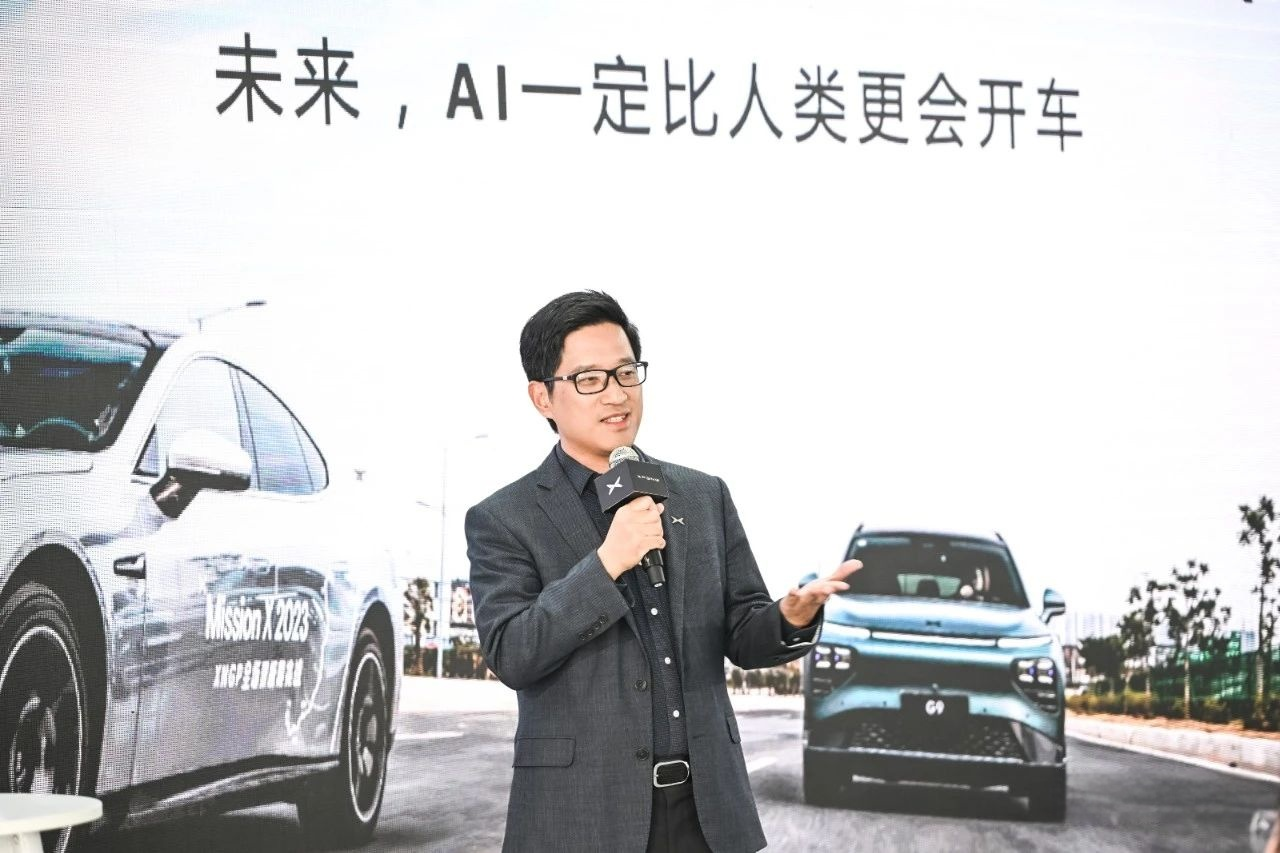Author: Zheng Senhong
Two years ago, Xiaopeng embarked on an expedition challenge from Guangzhou to Beijing with fully assisted high-speed NGP driving, ultimately concluding with an average single-car NGP traveled distance of 2930 kilometers and a total of 6245 lane change and overtaking maneuvers.
Two years later, Xiaopeng has once again launched the XNGP All-Scenario Extreme Challenge – passing through Guangzhou, Shenzhen, Huizhou, Hangzhou, Jiaxing, and finally arriving in Shanghai.
What’s different this time is that Xiaopeng’s intelligent driving challenge is no longer limited to high-speed scenarios, but rather traverses six cities, regardless of urban or high-speed settings.
In this expedition challenge, AutoTime also participated in the Shenzhen-Huizhou area performance. For example, facing the Shenzhen area’s hellishly difficult intelligent driving conditions, Xiaopeng XNGP’s performance was very smooth, whether it’s dealing with dense traffic or connecting elevated and ground-level roads.
Even when entering the Huizhou area without high-precision maps, the LCC-L can not only provide stop-and-go experiences at red and green lights, but the system can also determine whether it’s possible to quickly pass through intersections during yellow light status based on vehicle speed and intersection distance.
In simpler terms, this is the first stage of Xiaopeng XNGP’s all-scenario assisted driving. The biggest change is undoubtedly transitioning from heavily relying on high-precision maps in the past, to now being able to utilize LCC-L as a fallback capability in mapless cities. This version has already been pushed to G9 and P7i Max users at the end of March.
“In the next stage (second half of the year), Xiaopeng will enable automatic lane changes, overtaking, and left/right turns in cities without high-precision map coverage,” revealed Wu Xinzhou, Vice President of Xiaopeng’s Autonomous Driving Center.
XNGP Stage 1: Moving freely with maps, and cautiously progressing straight without mapsIn terms of functional definitions, the comprehensive auxiliary driving capabilities for all scenarios have become the focus of competition among car manufacturers, with Xpeng referring to this as XNGP, which stands for highway assist driving + urban road assist driving + parking lot navigation assist driving point-to-point auxiliary driving features across all scenarios.
In terms of product completeness, throughout a more than 120 kilometers driving journey across the cities of Shenzhen and Huizhou, whether on highways or urban roads or with or without a navigation map, Xpeng’s XNGP has seen a remarkable improvement in quality.
Starting with the mapped areas:
“Zero takeovers throughout the entire journey” – this is the score Xpeng XNGP achieved in the 46-kilometer smart driving test in the urban area of Shenzhen.
Ordinary urban road driving is no longer a problem for Xpeng XNGP. It can provide early warning and flexible response capabilities when facing construction zones, cut-in lane changes, and slow vehicle bypasses.
For example, when encountering a forced lane change from a nearby vehicle, the previous response of Xpeng P5 was to “avoid at all costs,” only resuming slow progress after the nearby vehicle had changed lanes and left a large enough space. This overly cautious strategy resulted in certain security risks for CNGP.
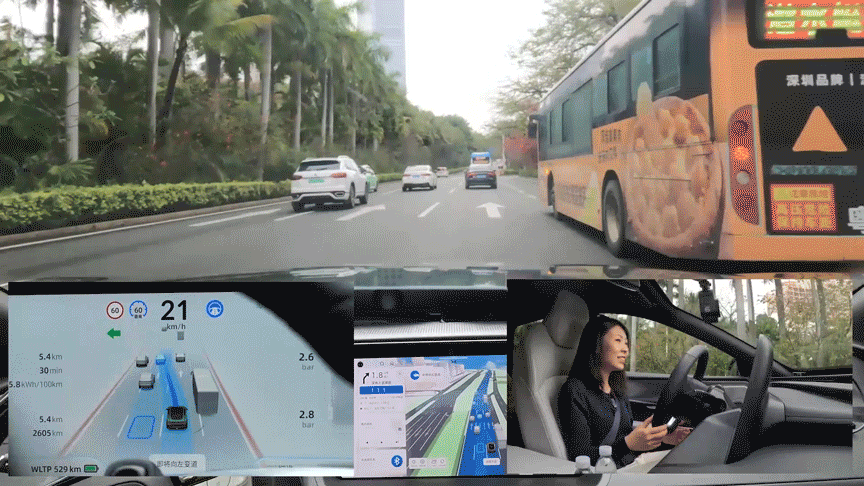
In contrast, XNGP will initiate a lane change proactively for a lane with less traffic, while maintaining a safe distance from the adjacent vehicle, as soon as it detects the intention of a nearby vehicle to cut in.
In fact, this is consistent with human driving styles, ensuring safety while completing passages more efficiently.
Upon entering the highway, we encountered a highly challenging scenario – torrential rain.
In heavy rain, the rainwater, the water mist raised by the front vehicle, and the water on the ground all greatly affect the perception and recognition of the auxiliary driving camera. However, Xpeng XNGP not only works stably but also provides decisive and smooth experiences for entering and exiting ramps and changing lanes.
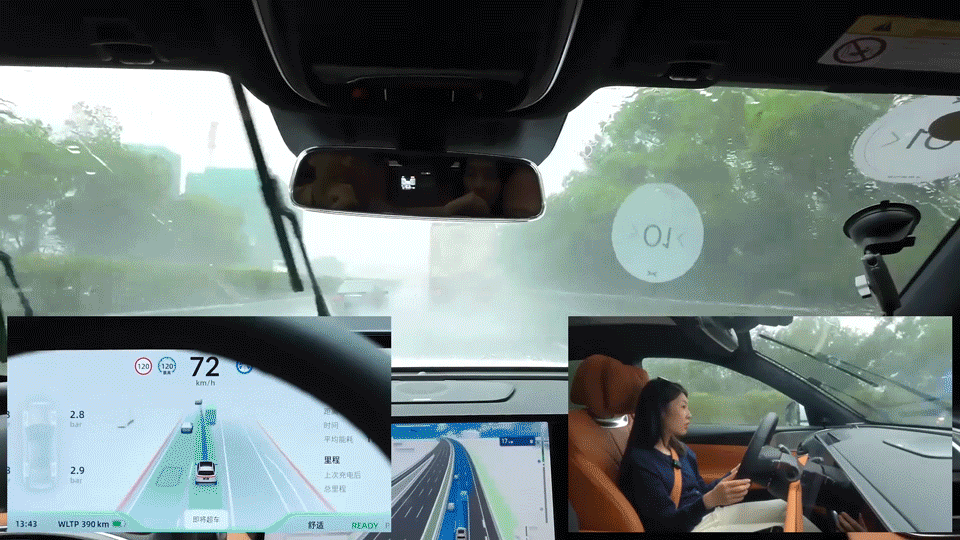 Translate the following Markdown Chinese text into English Markdown text, in a professional manner, retaining the HTML tags in Markdown, and output only the result.
Translate the following Markdown Chinese text into English Markdown text, in a professional manner, retaining the HTML tags in Markdown, and output only the result.
Under normal conditions, the NGP on highways has shown a high level of maturity, including automatic lane changing, on and off-ramps, and more, with no compromises on convenience or efficiency for safety.
The impressive performance of XNGP owes much to the code refactoring of the system, which refers to Highway NGP 2.0.
According to a Xiaopeng Intelligent Driving engineer, Highway NGP 2.0 will continue to address the long tail issues, including lane change ability, on/off-ramp capabilities, and traffic efficiency.
Finally, let’s look at XNGP’s performance without a map.
In the absence of highly accurate maps, Xiaopeng XNGP mainly implements LCC-L (Road Centering Assistance Enhanced Edition), covering scenarios such as traffic light recognition, start-stop, and detouring around non-existent lane lines.
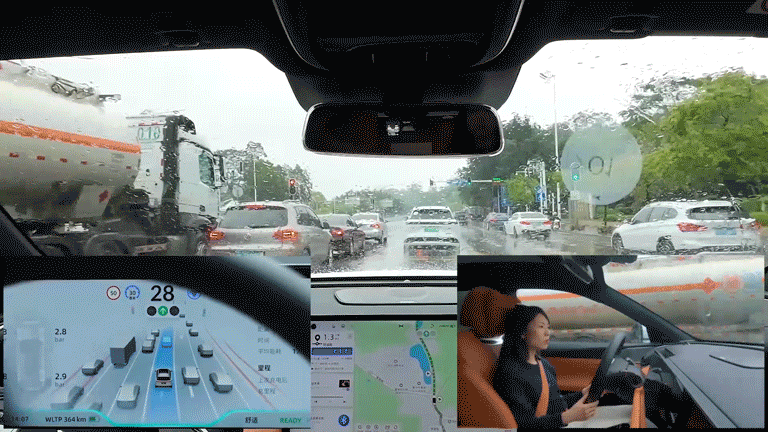
In short, you can think of it as the initial version of CNGP without a map.
Apart from automatic lane changes, overtaking, and left/right turns, LCC-L achieves a consistent level of detail and visual experience as CNGP.
For example, in the SR visualization interface, LCC-L can render with great detail even without highly accurate map information, including curves, solid and dashed lines, zebra crossings, stop lines, vehicles, pedestrians, and other traffic elements presented in clear 3D models.
In summary, through the Shenzhen-Huizhou driving experience, we can now have a full-scenario assisted driving experience from the starting parking space to the final parking space, including parking lots, urban roads, highways/expressways, and back to urban areas.
This represents Xiaopeng XNGP’s first-stage capabilities, with the most significant highlight being the “mapless” performance.
The engineer revealed that currently, highly accurate maps only cover major city trunk roads, secondary roads, and some branch roads. For example, in Guangzhou, the coverage of CNGP highly accurate maps is only about 70%. With the addition of temporary construction detours, these previously “immediate takeover” scenarios can be supplemented with mapless LCC-L support.Translate the following Markdown Chinese text into English Markdown text, in a professional manner, preserving the HTML tags inside the Markdown, and only outputting the result.
As for the next phase, think of it as an advanced version of CNGP without images – achieving lane changing, overtaking, and turning capabilities.
Discarding the “Guide Cane,” XPeng Starts Walking on Its Own
Discarding high-precision maps is becoming a consensus among leading companies.
In the industry’s view, the current level of vehicle autonomy is insufficient for them to move as freely on the roads as humans. To address this, LiDAR and high-precision maps are employed – the former to enhance the perception capabilities of self-driving systems, and the latter to improve their planning capabilities.
These two sensors could initially help automakers quickly achieve advanced intelligent driving features. However, due to factors such as map freshness and long review cycles, the issue of discarding high-precision maps has been constantly raised in the industry.
As a result, the sector has adopted a “heavy perception, light map” technical approach. XPeng XNGP, Huawei ADS2.0, AutoX Driver 3.0, Light Boat Intelligent Navigation, and DJI’s next-generation intelligent driving solution are all based on BEV perception + Transformer model to achieve end-to-end urban NOA assisted driving.
In 2022, XPeng Motors clearly stated that its XNGP, based on the XNet deep learning algorithm, would no longer rely on high-precision maps by 2023. Subsequently, He Xiaopeng has repeatedly reiterated this map-free assisted driving solution at public events.
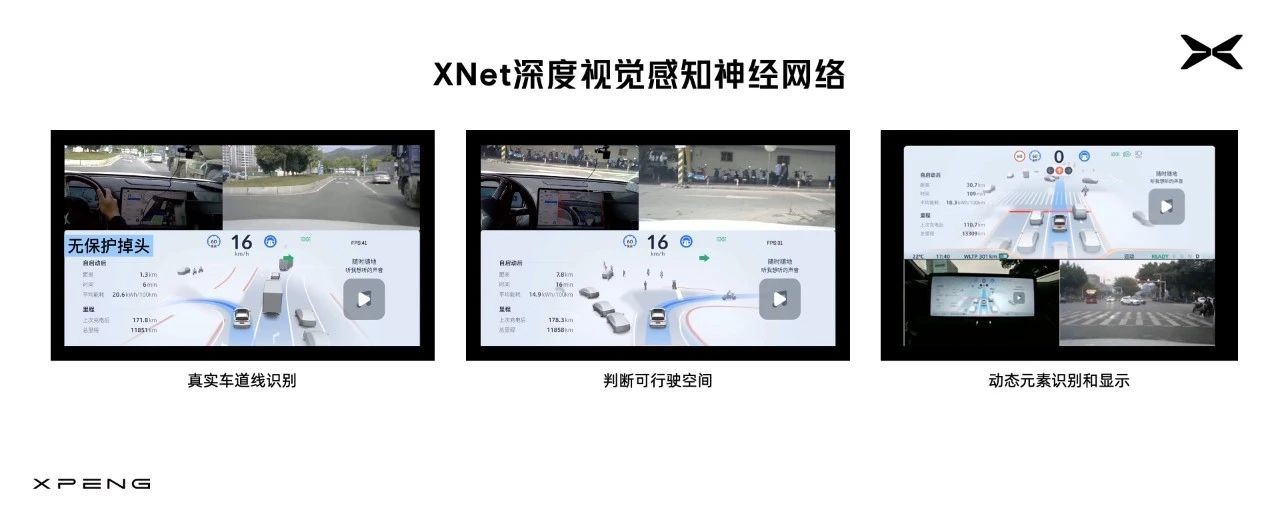
Simply put, BEV (a vision-centric bird’s-eye view) is a vision-centric perception algorithm, also known as the “God’s-eye view.” It essentially projects images from multiple camera angles through a common feature extractor into the same BEV space.
Intelligent driving solutions based on the BEV+Transformer technical architecture use vision-centered perception as their core. Auxiliary hardware like LiDAR and other cameras help to fuse the data collected by cameras and other hardware into a single space. The Transformer model then processes large amounts of data, such as identifying real lane lines and determining the drivable space.With the help of BEV, Xiaopeng has put XNGP on the “fast track.”
In the second half of this year, Xiaopeng will launch mapless XNGP in dozens of cities in China.
As for why it cannot be implemented in all areas yet? —— This may be related to engineering volume.
Wu Xinzhou said that the regional differences in China’s roads are too great. Regardless of the dynamic or static data collection that has been completed, it takes at least six months to implement the functions.
“The difference between each city is about 5-10\%, such as Shanghai’s waiting area being more than other cities, but as more cities open up, this difference will gradually converge.” Wu Xinzhou added.
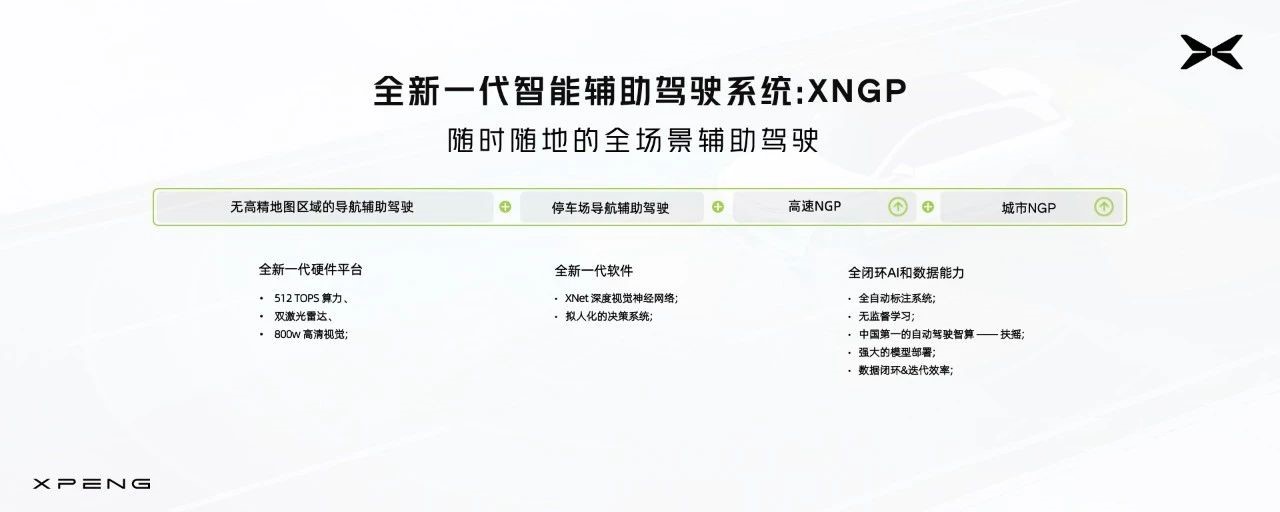
For example, it took Xiaopeng’s R&D team 9 months to open G9’s urban NGP function in Guangzhou, followed by Shenzhen and Shanghai in less than 7 months.
Based on the AI and data capabilities system that has achieved a full-process closed loop, XNet can quickly expand between different cities.
It is understood that XNet has completed the geometric part of the output for the static environment, such as identifying ground, fences, traffic lights, buildings, and other static objects with a width and height of more than 100 meters and their relative positions. However, semantic understanding is still being improved, including zebra crossing deceleration, road arrow left turn, special vehicle avoidance, etc.
From the data perspective, since October 24 last year, Xiaopeng’s internal software iterations have exceeded 300 versions, human-computer interaction optimization has exceeded 200 times, and the accumulated simulated data has exceeded 1.44 million kilometers per day.
Wu Xinzhou revealed that the code volume of urban NGP is 6 times that of the original highway NGP, and the same scenario, the code volume of highway NGP 2.0 is 500\% more than the original.
 In our company, we have a firm objective to make High-Speed NGP 2.0 very close to an L4 experience. This process will be accomplished in four steps, with the first one being achieving zero contact takeover without rubbing against or downgrading and without causing stalling, disturbance, or handing over.
In our company, we have a firm objective to make High-Speed NGP 2.0 very close to an L4 experience. This process will be accomplished in four steps, with the first one being achieving zero contact takeover without rubbing against or downgrading and without causing stalling, disturbance, or handing over.
I have not yet seen the limit of XNet, and I haven’t encountered a problem we cannot solve. We have great confidence in making our visual network as precise as high-definition maps,” said Wu Xinzhou.
The Next Milestone: AI Will Definitely Drive Better Than Human Drivers
In terms of scenario requirements, urban navigation-assisted driving has already become the entry ticket for the next stage of competition.
Li Xiang once said that by 2024, the difference between having and not having urban navigation-assisted driving will be as significant as the difference between a 20-30-story building with and without an elevator, which will influence consumer purchasing decisions in mid-to-high-end vehicles.
Looking back at high-speed navigation assistance, this feature has evolved over the past three years, gradually gaining user recognition and becoming one of the defining attributes of intelligent vehicles. The public is now looking forward to urban navigation assistance as the next defining feature.
Seizing the opportunity to unlock more cities on a large scale is just a matter of time for the rapidly advancing XPeng.
“In the next stage of intelligent vehicles, striking a balance between experience and cost is a challenge, but it is also XPeng’s advantage,” said Liu Yilin, XPeng’s Sr. Director of Autopilot Products.
On the one hand, XPeng is reinforcing its “intelligent” label: in the second half of this year, the Urban Driving Assistance feature, XNGP, will cover dozens of cities across the country, with results surpassing those of Tesla on the other side of the ocean.
On the other hand, XPeng is emphasizing supply chain efficiency and strictly controlling supply chain costs: By 2024, Autopilot BOM costs will be reduced by half, achieving the shift from bundled sales of hardware and software to hardware as a standard feature.
As a result, XPeng has already outlined its vision for establishing a fully connected intelligent driving experience across all scenarios. “By 2024-2025, AI will definitely drive better than human drivers,” and this will become a crucial “milestone” in XPeng’s journey.Please provide the Chinese Markdown text that you would like translated into English Markdown text.
This article is a translation by ChatGPT of a Chinese report from 42HOW. If you have any questions about it, please email bd@42how.com.
